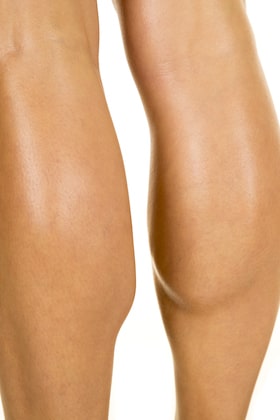
The calves serve an important purpose on the body in their location on the back portion of the lower legs. They assist with the movement of the foot and ankle including tasks such as running, walking, jumping, flexing the foot, and standing on the toes. In addition, the calf aids in enhancing the amount of stability and balance enjoyed by a person and prevents issues with the ankle. Even though the calves serve an important functional purpose on the body, there are times when a person might want to augment their claves for aesthetic reasons as well as correcting lower leg issues that are due to an injury, birth defect, or disease.
 There are multiple choices for calf implants, and they are available in different sizes as well as solid silicone and silicone gel implants.
There are multiple choices for calf implants, and they are available in different sizes as well as solid silicone and silicone gel implants.
When it comes to the difference between the two silicone choices, silicone gel calf implants have a chance of experiencing capsular contracture (although this issue is more common with breast implants). On the other hand, solid silicone calf implants can sometimes contain an edge to them that can be felt if they are placed too close to the surface of the skin so many doctors recommend that they be placed in the body using submuscular placement.
In general, calf implant surgery begins with the patient being given anesthesia to keep them comfortable and free of pain during the surgery. The size of the calf implants that will be placed in the body are determined when the doctor measures the legs before the procedure.
The surgeon creates an incision behind the knee since it is not easy for the average eye to detect any scars in that area of the body. Then, the surgeon will create a pocket between the muscle and the fascia (connective tissue that supports organs and tissue) so the calf implant can be placed within the calf muscle. The preference of the patient determines if the surgeon augments the inner or outer calves (or both).
During the initial recovery period, the lower legs will experience some bruising and swelling. The patient needs to keep the legs elevated for the first few days to reduce the amount of swelling. The doctor will let the person know when they should try and start walking again after the procedure. It will take about three weeks before the patient is able to start walking normally again. Patients will need to avoid strenuous exercise for about two months. After four to six weeks, the patient will likely be able to resume their normal activities.
There will be some pain involved with the procedure, so the patient needs to be prepared to possibly take some pain medication for three to five days after the surgery. They should also be prepared to walk for a little while in their home as they start to recover from the surgery in order to reduce the chances of a blood clot.
The actual recovery time from calf augmentation surgery also depends on the placement of the calf implants, If the implants are placed below the fascia, this is considered to be a less invasive technique that offers a faster recovery time than surgery that places the calf implants inside the muscle.
When it comes to calf implant risks, the placement of the implant in the muscle might see the implant rotate which means the calf will be defined by the calf implant and not by the calf muscle. The calf implants are usually more secure if they are placed below the fascia.
Som of the additional risks of the procedure include an infection, scarring, changes in sensation, asymmetrical appearance to the results, and nerve damage.
Patients who want to have calf implant surgery often want to have it for aesthetic reasons to augment the look of the calves. There are also patients who want to correct an asymmetrical look to the calves that might be the result of a previous surgery to correct an injury to the lower legs.
The candidate should also realize that the desired size of the calf implant needs to easily fit within the envelope of the fascia so the implant will not migrate in the body.
In addition, the patient can be someone who is looking to restore their confidence in the appearance of their calves while also hoping to gain an improved self-image. If the person is trying to see an increase in the overall circumference of their legs, they can have two calf implants placed inside each leg.
Before the actual surgery, the patient will have a consultation appointment so the doctor can make sure the person is healthy enough to have the procedure and that they fully understand what is involved with both the surgery and the recovery process.
- MA